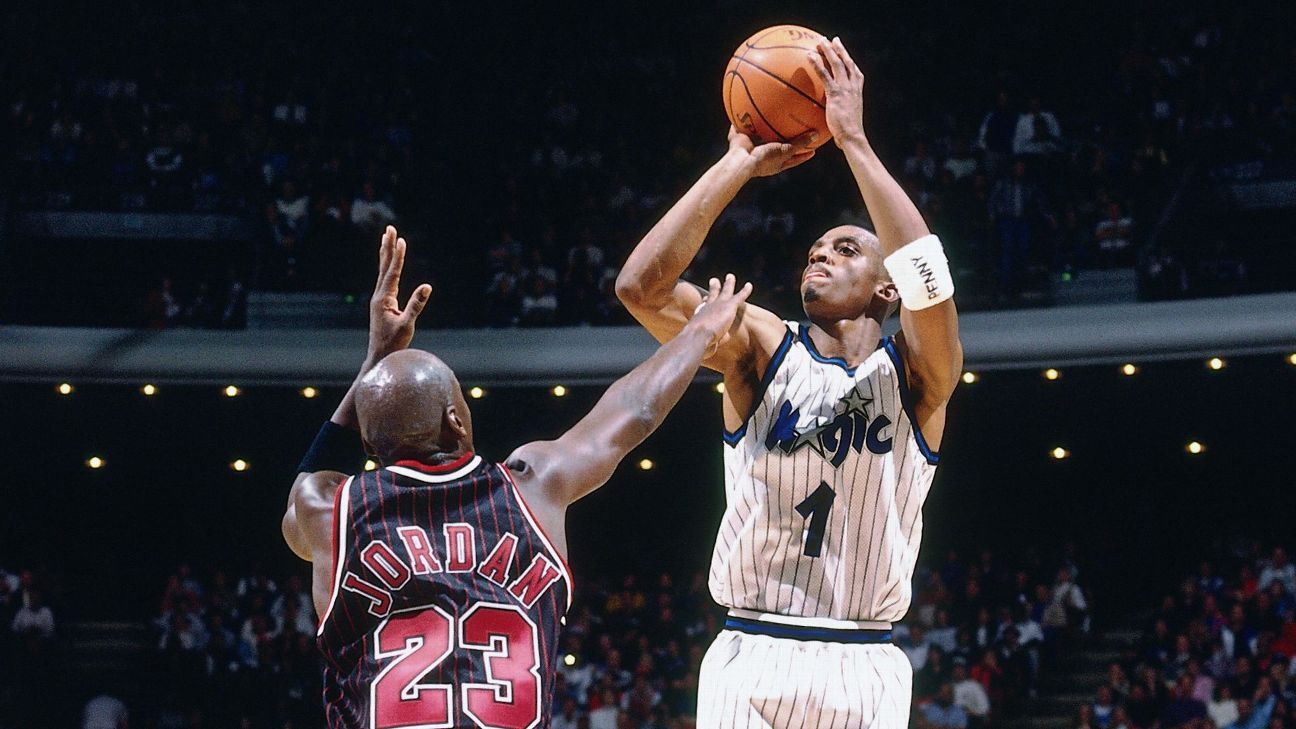If you hold the belief that college basketball playing greatness is a meaningful prerequisite to college basketball coaching greatness, 2022 was your year.
Each of last season’s Final Four coaches — Kansas’ Bill Self (Oklahoma State), North Carolina’s Hubert Davis (UNC), Duke’s Mike Krzyzewski (Army) and Villanova’s Jay Wright (Bucknell) — had Division I basketball playing experience, the first time in 10 years that each of the men’s Final Four coaches played at the D-I level.
It was quite a switch from 2021, when none of the men’s Final Four coaches — Baylor’s Scott Drew, Gonzaga’s Mark Few, UCLA’s Mick Cronin and Houston’s Kelvin Sampson — played D-I, and only Sampson (a UNC Pembroke grad) played college basketball at all.
Will the coaching stars of March Madness 2023’s third weekend be serious ex-ballers, or something less than? As history has demonstrated, it doesn’t matter. But after the retirement of Coach K and Wright, and given Davis’ inability to get the Tar Heels back to the Dance, we know the sideline mix at NRG Stadium in Houston on April 1 will bring different origin stories ranging anywhere from “former NBA All-Star” to “never played in high school.”
(Annual disclaimer: Our ranking of the 68 NCAA tournament coaches as players was devised in largely unscientific fashion by the writer, who still has not discovered a method to reliably compare a Division III star to a D-II reserve to a D-I walk-on. Feel free to vent your frustrations like this guy did if you take issue with the ranking.)
First, the breakdown of the highest level of basketball achieved from this year’s group:
NBA (regular-season roster): 6
Other professional basketball experience: 10
Division I college basketball: 19
Lower NCAA levels, NAIA, NCCAA or junior college: 22
High school (varsity roster): 8
No varsity high school experience: 3
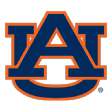
68. Bruce Pearl, Auburn Tigers — Pearl did not play basketball at Sharon (Massachusetts) High School, as an injury suffered playing football during his freshman year prevented him from pursuing the sport. The Quincy (Mass.) Patriot-Ledger reported in 2008 that Pearl played high school baseball, primarily as a designated hitter. Pearl’s path to basketball coaching started when he was hired as a student assistant at Boston College under Tom Davis, and was later added to Davis’ coaching staff at Stanford.
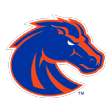
67. Leon Rice, Boise State Broncos — Rice played junior varsity basketball at Richland High School in southeast Washington but did not lace ’em up in his collegiate stops at Columbia Basin College or Washington State. Rice did play college football for Columbia Basin, and for the second straight year is the only former college football player in our survey.

66. Scott Drew, Baylor Bears — Drew’s playing days ended with the JV team at Valparaiso (Indiana) High School. Though his brother, Grand Canyon coach Bryce Drew, played in the NBA (more to come on him later), Scott Drew was a tennis player (he played on the team but didn’t letter) and basketball manager at Butler.
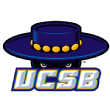
65. Joe Pasternack, UC Santa Barbara Gauchos — Pasternack played varsity basketball for four years at Metairie Park Country Day School in New Orleans but did not play college basketball. Pasternack was a student manager at Indiana in the latter stages of the Bob Knight era, graduating from IU in 1999.

64. Rob Senderoff, Kent State Golden Flashes — Senderoff played high school basketball for Spring Valley High School in suburban New York City but did not play college basketball at Albany, instead serving as a student assistant. “I was a bad player in high school,” Senderoff told Cleveland.com in 2019. “I went out for the junior varsity team at Albany. The coach cut me and kept nine guys. I would have been the 10th to help practice, but the coach didn’t even think I was good enough to do that.” (The coach, current Yale leader James Jones, later hired Senderoff as an assistant coach at Yale.)
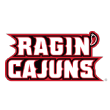
63. Bob Marlin, Louisiana Ragin’ Cajuns — Marlin started at point guard for a state tournament team at Tupelo High School in Mississippi but declined junior college offers in favor of ending his playing career and attending Mississippi State.

62. Brian Dutcher, San Diego State Aztecs — Dutcher played his final level of competitive basketball for the varsity team at Jefferson High School in Bloomington, Minnesota, later attending the University of Minnesota but not playing under his father, Jim Dutcher, the Golden Gophers’ head coach from 1975 to 1986. The younger Dutcher worked for his dad in a nonplaying role during college before beginning his coaching career at Apple Valley (Minnesota) High School and later the University of Illinois.

61. Mark Few, Gonzaga Bulldogs — Few led Creswell (Oregon) High to the state’s AAA semifinals as a senior point guard. Shoulder problems prevented him from playing at Linfield College, where he intended to play basketball and baseball.

60. John Becker, Vermont Catamounts — Becker was a good high school player at Roger Ludlowe High School in Fairfield, Connecticut. Read here about his 35-point game as a senior. Becker did not play intercollegiate basketball at Catholic University, his alma mater.
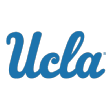
59. Mick Cronin, UCLA Bruins — Cronin was an undersized but good high school point guard under his father, Hep, at Cincinnati’s La Salle High. Cronin reportedly led the city in assists and was second in 3-point percentage during his junior season of 1988-89, but a knee injury sustained as a senior was a factor in Cronin’s playing career ending before he reached college at Cincinnati.
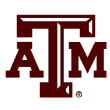
58. Buzz Williams, Texas A&M Aggies — Williams played at Van Alstyne (Texas) High School and told ESPN in 2012 that he could’ve made the roster at various “Bible colleges” across the country. Williams ultimately did not play basketball at either of his collegiate stops — Navarro Junior College (Texas) or Oklahoma City University — but served as a student assistant at both places.

57. Jerome Tang, Kansas State Wildcats — Tang was a student at North Central University in Minneapolis in 1985 (then known as North Central Bible College) when he was asked to try out for the Division III Rams (“I didn’t play a lot, but I made the team,” Tang told the Topeka Capital-Journal), and later played for Normandale Community College (1987-88) in Bloomington, Minnesota, for one season.

56. Dusty May, Florida Atlantic Owls — May was a quality high school point guard under coach Mark Barnhizer at Eastern Greene High School in the Bloomington, Indiana, area, later playing one college season at the NAIA level for Oakland City (Indiana) University before transferring to become a student manager under Bob Knight at Indiana (1996-2000).

55. Paul Mills, Oral Roberts Golden Eagles — Mills was a good high school player at MacArthur Senior High School in Houston, earning a scholarship to the powerhouse NAIA program at Southern Nazarene University in Bethany, Oklahoma. Mills did not letter for the Bronchos because of a back injury suffered during his freshman year, then transferred to Texas A&M, where he did not play basketball.
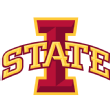
54. T.J. Otzelberger, Iowa State Cyclones — Otzelberger was a three-year letterwinner as a guard at the Division III level for Wisconsin-Whitewater, before his playing career with the Warhawks was cut short due to lateral compartment syndrome in his left leg. Otzelberger is one of several coaches on this list who are not the best player in their own families — his wife, Alison Lacey, was a star at Iowa State and a first-round WNBA draft pick of the Seattle Storm in 2010.
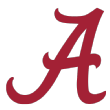
53. Nate Oats, Alabama Crimson Tide — Oats played at Maranatha Baptist University in Watertown, Wisconsin, from 1993 to 1997, participating at the Division II level of the National Christian College Athletic Association (NCCAA). Oats appeared in all 30 games for a Maranatha Baptist team that reached the Division II semifinals of the 1997 NCCAA tournament.
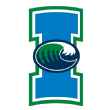
52. Steve Lutz, Texas A&M-Corpus Christi Islanders — Lutz began his college basketball career at Ranger Junior College before transferring to then-NAIA Texas Lutheran University of Segun, Texas. Lutz played three seasons for the Bulldogs (1992-95) and was a team captain during his senior season.

51. Randy Bennett, Saint Mary’s Gaels — Bennett started his career playing under his father, Tom, at Mesa Community College in Arizona (1980-82), then played two seasons as a point guard at then-Division III UC San Diego (1983-85). Bennett led the Tritons in assists in both of his seasons with the team.
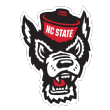
50. Kevin Keatts, NC State Wolfpack — Keatts played point guard for Division III Ferrum (Virginia) College from 1991 to ’95, helping lead the Panthers to the second round of the NCAA tournament in 1992 in what remains the school’s lone postseason appearance. Keatts, whose teams won three Dixie Conference regular season titles in four years, averaged 13.3 points per game as a senior.

49. Rick Barnes, Tennessee Volunteers — Barnes served mainly as a reserve guard under head coach Bob Hodges at Division II Lenoir-Rhyne College in Hickory, North Carolina, from 1974 to 1977, never averaging more than three points per game. “He was good, but it didn’t translate to games,” Barnes’ teammate John Lentz told the Dallas Morning News in 1998.
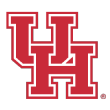
48. Kelvin Sampson, Houston Cougars — Sampson was a point guard and later a team captain at NAIA Pembroke State (now UNC Pembroke) from 1973 to 1978, and was eventually named to the school’s athletics hall of fame, alongside his father, Ned. Sampson also earned three collegiate letters as a baseball player at Pembroke.
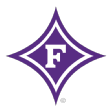
47. Bob Richey, Furman Paladins — Richey was a high school standout at Florence Christian in Florence, South Carolina, winning 3A Player of the Year honors and leading the Eagles to a 28-2 mark and state title as a senior. Richey played college hoops at now-dormant Tennessee Temple University in Chattanooga, ranking among the leading scorers on a team that won the 2003 National Christian College Athletic Association (NCCAA) Division I title. After suffering a knee injury, Richey transferred to North Greenville College, where he concluded his playing career.
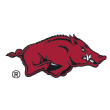
46. Eric Musselman, Arkansas Razorbacks — Musselman was an undersized reserve guard at the University of San Diego (1983-87), earning limited playing time but appearing in a pair of NCAA tournaments as a player. After graduating, Musselman was a fifth-round draft choice of the CBA Albany Patroons, who were at the time coached by his father, Bill.
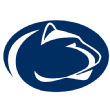
45. Micah Shrewsberry, Penn State Nittany Lions — Shrewsberry played college basketball at the Division III level for Hanover College in Indiana, starting for the Panthers for three seasons and leading the Heartland Collegiate Athletic Conference in free throw percentage and assists during his senior season of 1998-99.

44. Mike Morrell, UNC Asheville Bulldogs — Morrell played college basketball at the NAIA level for Milligan University in Tennessee, scoring 1,000 career points as a three-year starter who also appeared in the 2001 NAIA tournament. A two-sport star, Morrell was also a two-time all-conference pick in golf for the Buffaloes.

43. Rodney Terry, Texas Longhorns — Terry was a three-year starter at point guard for Division II St. Edward’s University (1986-90) in Austin, Texas, serving as a two-time team captain for the Hilltoppers. Terry also contributed as a freshman for a Hilltoppers team that was a co-champion in the Big State Conference.

42. Ed Cooley, Providence Friars — Cooley was a three-year captain at then-Division II Stonehill College in Easton, Massachusetts, from 1990 to 1994, averaging 7.4 points and 5.6 rebounds per game for his career.

41. Tom Izzo, Michigan State Spartans — Izzo played point guard at Division II Northern Michigan from 1974 to 1977, captaining the team and also winning all-conference and team MVP accolades as a senior.

40. Shaka Smart, Marquette Golden Eagles — Smart was a four-year starter (1995-99) and three-year captain at Division III Kenyon College in Gambier, Ohio. He made the All-North Coast Athletic Conference team during his senior season and remains the school’s career assists leader (542) by a wide margin.

39. Tobin Anderson, Fairleigh Dickinson Knights — Anderson was a 1,000-point scorer at Wesleyan University in Middletown, Connecticut (other famous Wesleyan alumni: Tony Award winner Lin-Manuel Miranda, NFL coach Bill Belichick and ESPN’s Field Yates). Anderson ranks in the all-time top 15 in points for the Division III Cardinals and still holds the record for 3-point percentage in a season (48.1% in 1992-93).
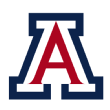
38. Tommy Lloyd, Arizona Wildcats — Lloyd played at Walla Walla (Washington) Community College, where he was a prolific scorer who set a school single-season record with 52 points in a game and was an NWAAC All-Star. Lloyd told the Tucson Daily Star his play in Walla Walla generated “some low, low-level D-I interest” before he transferred to Division II Southern Colorado (now CSU Pueblo) for the 1995-96 season and finished his career at Division III Whitman College. Lloyd went on to play semi-pro basketball for two seasons in Australia and Germany before beginning his coaching career.
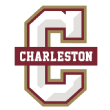
37. Pat Kelsey, Charleston Cougars — Kelsey played at Wyoming (1993-94) and then Xavier (1995-98), serving as a reserve guard on two NCAA tournament teams under Skip Prosser. Kelsey, who later launched his collegiate coaching career when he was hired to Prosser’s staff at Wake Forest, scored 122 points and dished out 131 assists during his college playing career.

36. Ryan Odom, Utah State Aggies — Odom played at Division III Hampden-Sydney, scoring 1,162 career points, logging 362 assists and appearing on a pair of NCAA tournament teams with the Tigers. A 5-foot-10 guard, Odom continues to hold HSC records for 3-pointers in a season (82 in 1994-95) and consecutive games with a 3 (24 in 1995-96).
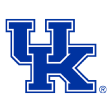
35. John Calipari, Kentucky Wildcats — Calipari started his career at UNC Wilmington, scoring 29 points during the 1979-80 season before transferring to Division II Clarion, closer to his native Western Pennsylvania. Calipari was a starter at point guard for the Golden Eagles, averaging 5.3 points and 5.3 assists during his senior season.
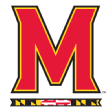
34. Kevin Willard, Maryland Terrapins — Willard played for his father, Ralph, at Western Kentucky (1993-94) and then Pittsburgh (1995-97), serving mostly as a backup point guard. He made his lone NCAA tournament appearance as a player for WKU in the 1994 NCAA tournament, scoring 5 points in 14 minutes in a first-round loss to Texas. Willard, who scored 299 career points as a college player, passed up his senior season at Pitt to become an advance scout for Rick Pitino with the Boston Celtics.

33. Rick Pitino, Iona Gaels — Pitino played as a point guard at UMass (1972-74), totaling 329 assists during his career there on teams that included future NBA player (and eventual Rhode Island, Boston College and Kennesaw State coach) Al Skinner.
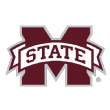
32. Chris Jans, Mississippi State Bulldogs — Jans was a three-year starter and prolific scorer at Division III Loras College in Dubuque, Iowa, between 1987 and 1991, averaging 28.3 points per game and making a school-record 133 3-pointers during his senior season. During Jans’ college career, the Duhawks broke 16 scoring records and two Division III records for 3-point shooting.

31. Brad Korn, Southeast Missouri State Redhawks — Korn was a key player for Southern Illinois during a successful period for the Salukis (1999-2004), playing three seasons under Bruce Weber and one under Matt Painter and appearing in 121 games over that stretch. The 6-foot-9 forward played in five NCAA tournament games over three different seasons, including all three games in SIU’s march to the 2002 Sweet 16. Korn scored 15 points in his final collegiate game, a 65-64 loss to Alabama in the first round of the 2004 NCAA tournament.

30. Brad Underwood, Illinois Fighting Illini — Underwood started his collegiate career at then-Division I Hardin-Simmons (1982-83) in Abilene, Texas, before moving on to Independence (Kansas) Community College (1983-84) and then to Kansas State for two seasons (1984-86). Underwood was an occasional starter at guard under head coach Jack Hartman, scoring 105 points in two seasons in the Big Eight.

29. Andy Enfield, USC Trojans — Enfield was a Division III All-American at Johns Hopkins in Baltimore, where he still holds the school’s career scoring record (2,025 points) and also played in a pair of NCAA tournaments. Enfield was particularly legendary at the line — he graduated holding the NCAA’s all-divisions career free throw percentage record (92.5%, hitting 431 of 466 shots).

28. Mike Rhoades, VCU Rams — Rhoades didn’t just play Division III basketball, he was the best player in Division III, winning national player of the year honors in 1995 and two All-America citations at Lebanon Valley (Pa.) College. The shooting guard — who also led the team to a national title in 1994 — holds school records for points, assists, steals and free throw percentage, and his jersey was retired by the school.

27. Kenny Blakeney, Howard Bison — Blakeney is one of five former Duke players in this tournament, having appeared in 93 games (11 starts) as a guard for the Blue Devils from 1991 to ’95. A Gatorade Player of the Year in the state of Maryland after playing under the legendary Morgan Wootten at DeMatha Catholic, Blakeney averaged 3.2 points and 1.2 assists per game over his collegiate career, appearing in six NCAA tournament games during his time in Durham. As a redshirt freshman in 1992, Blakeney logged 13.5 seconds at the tail end of Duke’s national championship win over Michigan’s Fab Five.
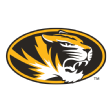
26. Dennis Gates, Missouri Tigers — Gates played four seasons at Cal (1998-2002) under Ben Braun, appearing in 114 games (34 starts) at guard including a pair of NCAA tournaments. Gates averaged 3.8 points per game for his collegiate career and was a two-time Pac-12 All-Academic choice.

25. Fran McCaffery, Iowa Hawkeyes — McCaffery started his career in the ACC, averaging 5.3 points as a freshman at Wake Forest (1977-78) before transferring to Penn for his final three collegiate seasons. As a senior (1981-82), McCaffery totaled 105 assists for a Quakers team that reached the NCAA tournament.
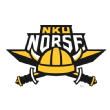
24. Darrin Horn, Northern Kentucky Norse — Horn was a baller at Western Kentucky (1991-95), playing in three NCAA tournaments as a guard and picking up an All-Sun Belt citation as a senior. Horn (8.9 PPG for his career) played on the legendary 1992-93 WKU team that knocked off Memphis and Seton Hall before being upended by Sam Cassell, Charlie Ward, Bob Sura and Florida State in overtime in the Sweet 16. He was a teammate of current Maryland coach Kevin Willard (see No. 31 above) on the 1994 team that fell to Texas in the first round.
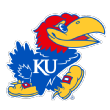
23. Bill Self, Kansas Jayhawks — Self played at Oklahoma State from 1981 to 1985, starting at point guard over his final two seasons in Stillwater. Self also played in the 1983 NCAA tournament as a sophomore at OSU, scoring eight points in a No. 5 vs. 12 upset loss to Princeton in the first round.

22. Darian DeVries, Drake Bulldogs — DeVries was a 1,000-point scorer and two-time captain at Northern Iowa (1994-98), developing into a double-digit scorer and the team’s assist leader over his final two seasons at UNI. DeVries led the Panthers in 3-point shooting three times, including 44% from 3 as a senior. DeVries did not play professional basketball but has a pro in the family — his younger brother, Jared, was an NFL defensive end for 10 years with the Detroit Lions.
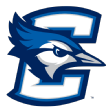
21. Greg McDermott, Creighton Bluejays — McDermott was a reliable center at Northern Iowa (1984-88), scoring 1,033 points (or about 2,000 fewer than his son, Creighton legend Doug McDermott) and being selected to the All-Mid-Continent Conference team as a junior. McDermott briefly played professional basketball in Switzerland following his graduation.

20. Danny Sprinkle, Montana State Bobcats — Sprinkle was a Montana State playing legend before he became a coaching legend in Bozeman, playing four seasons with the Bobcats (1996-2000), including a starting role on an NCAA tournament team in 1995-96. Sprinkle, the Big Sky Freshman of the Year, was an All-Big Sky tournament pick for his 30-point performance in the ’96 Big Sky championship win over Weber State. Sprinkle would earn three All-Big Sky citations, including a first-team selection in 1997, and graduated as the MSU career and season 3-point leader. He remains in the school’s top 10 with 1,497 career points and was a 2006 inductee into the Montana State Athletics Hall of Fame.

19. Johnny Jones, Texas Southern Tigers — Jones played point guard for four seasons at LSU under Dale Brown (1980-84), averaging 4.4 points and 2.2 assists per game over a 121-game career and playing in a pair of NCAA tournaments as a Tiger. Jones is one of seven coaches in this tournament with Final Four playing experience — he played nine minutes in LSU’s loss to eventual champion Indiana in the 1981 Final Four in Philadelphia.

18. Amir Abdur-Rahim, Kennesaw State Owls — Though his older brother, 13-year NBA veteran and current G League president Shareef Abdur-Rahim, was better known as a player, the younger Abdur-Rahim also played at a high level. After starting his career at Garden City (Kansas) Community College, Amir averaged 15.4 points over three Division I seasons at Southeastern Louisiana, where he played under future Texas A&M coach (and Abdur-Rahim’s future boss) Billy Kennedy. The three-time All-Southland Conference guard finished his career in the Lions’ top 10 in scoring.

17. Mitch Henderson, Princeton Tigers — Henderson played in 106 games over four seasons at Princeton (1994-98), playing in three NCAA tournaments under Pete Carril and Bill Carmody, and starting for the team that scored an iconic upset of UCLA in the 1996 tournament. Henderson, a second-team All-Ivy pick in 1998, ranks in the school’s top 10 in both assists (304) and steals (142). He would play one professional season in Ireland before beginning his coaching career. Henderson, also a fine prep baseball player at Culver (Indiana) Military Academy, was selected by the New York Yankees as an outfielder in the 29th round of the 1994 draft.

16. Matt Langel, Colgate Raiders — Langel was a very good player on some formidable teams at Penn (1996-2000), starting on a pair of NCAA tournament squads under Fran Dunphy and earning All-Ivy first-team honors as a senior. Langel went to rookie camp with the NBA’s Seattle SuperSonics and was on the Philadelphia 76ers’ pre-summer league squad, also playing for a range of teams in Europe before beginning his coaching career.

15. Matt Painter, Purdue Boilermakers — Painter was a four-year letterman at Purdue (1989-93), playing on three NCAA tournament teams and becoming a full-time starter as a senior. Painter was an honorable mention All-Big Ten choice in 1992-93, when he averaged 8.6 points and 4.5 assists per game.

14. Dan Hurley, UConn Huskies — Though brother Bobby received more of the limelight for his exploits at Duke (more on him in a bit), the younger Hurley was a collegiate point guard of some renown as well. Hurley played in 121 games over five seasons at Seton Hall (1991-96), appearing in a pair of NCAA tournaments and later developing into a double-digit scorer over his final two seasons at the school. Hurley’s 437 assists rank among the top 10 in Seton Hall history.

13. Sean Miller, Xavier Musketeers — Miller started for four seasons at Pitt between 1987 and 1992 (he missed the 1989-90 season due to a foot problem), with teammates including Jerome Lane, Charles Smith and Brian Shorter. Miller, who averaged 10 points and 5.8 assists over his career, was the Big East’s Freshman of the Year and would play in two NCAA tournaments.

12. Bob Huggins, West Virginia Mountaineers — Huggins, a prep standout who still ranks in the top 20 on the all-time Ohio high school scoring list, began his collegiate career at Ohio University in 1972 before transferring and playing three seasons at West Virginia under Joedy Gardner (1974-77). Huggins averaged 13.2 points and 3.8 assists as a senior, subsequently attending NBA training camp with the 76ers before being cut. A knee injury suffered when Huggins was hit by a car while bicycling weeks before the 1977 NBA draft curtailed his playing career.
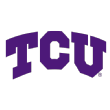
11. Jamie Dixon, TCU Horned Frogs — Dixon played at TCU from 1983 to ’87, with his best season coming as a senior, when he earned All-Southwest Conference honors, led the league in assists and paced the Horned Frogs to an NCAA tournament win. Dixon scored 11 points and had four assists in that first-round victory over Marshall. Dixon was selected in the seventh round of the 1987 NBA draft by the Washington Bullets and played professionally in the CBA and overseas.
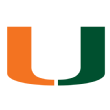
10. Jim Larranaga, Miami Hurricanes — Larranaga was a star at Providence from 1968 to ’71, graduating as the school’s all-time fifth-leading scorer (1,258 points) and leading the team in scoring in two of his three years with the Friars. He was inducted into the Providence Hall of Fame in 1991. Larranaga was selected in the sixth round of the 1971 NBA draft by the Detroit Pistons but left the team’s rookie camp when a position on Terry Holland’s staff opened at Davidson.
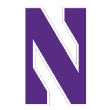
9. Chris Collins, Northwestern Wildcats — Collins played four seasons as guard at Duke (1992-96), most notably on the 1993-94 team (along with Pitt coach Jeff Capel and Howard coach Kenny Blakeney) that reached the national championship game before falling to Arkansas. A 9.1 point-per-game scorer who bombed 209 3-pointers over his four-year career, Collins was a 1996 All-ACC pick and later played two seasons of professional basketball in Finland.

8. Jeff Capel, Pittsburgh Panthers — Capel was a four-year starting guard at Duke (1993-97), playing as a freshman on the Grant Hill-led Blue Devils team that reached the 1994 national championship, where they lost to Arkansas. Capel averaged 12.4 points and 3.4 assists per game over his collegiate career and was an All-ACC pick during the 1995-96 season. Following graduation, Capel played professionally for three years, mostly in the CBA and briefly in France, before beginning his coaching career.

7. Jon Scheyer, Duke Blue Devils — One of two former Illinois “Mr. Basketball” honorees in this tournament, along with fellow Duke alum Chris Collins, Scheyer developed into an outstanding college player with the Blue Devils. Scheyer averaged 18.2 points per game and was a first-team All-ACC pick for the 2009-10 Duke team that defeated Butler to win the national championship, graduating as the only player in Duke history to record at least 2,000 points, 500 rebounds, 400 assists, 250 3-pointers and 200 steals in a career. Following his collegiate career, Scheyer played professionally in the NBA G League in addition to stints in Israel and Spain.

6. Bryce Drew, Grand Canyon Antelopes — The former Valparaiso star Drew is best remembered for his iconic buzzer-beater against Ole Miss in the 1998 NCAA tournament, also known as “The Shot.” But Drew was a lot more than that on the floor, a two-time Player of the Year in the Mid-Continent Conference who graduated as Valpo’s leading scorer and was selected No. 16 overall by the Houston Rockets in the 1998 NBA draft. Drew played in 243 NBA games as a member of the Rockets, Bulls and Hornets from 1998 to 2004.

5. Tony Bennett, Virginia Cavaliers — While playing for his father, Dick, at Green Bay, Bennett was a two-time Player of the Year in the Mid-Continent Conference (now the Summit League), leading the Phoenix to three postseason berths while graduating as the conference’s leader in points and assists. Bennett played 152 NBA games as a backup guard with the Charlotte Hornets before injuries hastened the end of his career.
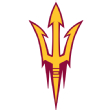
4. Bobby Hurley, Arizona State Sun Devils — Hurley was a decorated player at Duke, a two-time All-American who reached three Final Fours, won two national titles and was named the Most Outstanding Player of the 1992 Final Four. Hurley remains the all-time assists leader in NCAA history, with 1,076 over his four seasons in Durham. Hurley was the No. 7 overall pick by the Sacramento Kings in the 1993 NBA draft, but his pro career was set back by a serious car accident just 19 games into his rookie season. Hurley averaged 3.8 points and 3.3 assists over parts of five NBA seasons.

3. Steve Alford, Nevada Wolf Pack — Alford was one of the finest college basketball players of the 1980s, a two-time All-American who won a national championship (1987) at Indiana and a gold medal on the 1984 U.S. Olympic team, during the era when Team USA was composed of college players. Alford graduated IU as the school’s all-time leading scorer. After exhausting his eligibility as a Hoosier, the former Indiana “Mr. Basketball” was selected No. 26 overall in the 1987 NBA draft by the Dallas Mavericks, playing 169 games over four seasons with the Mavs and Golden State Warriors (1987-91) before beginning his career in coaching with Division III Manchester (Indiana) in 1991.

2. Mike Woodson, Indiana Hoosiers — Woodson was a fantastic college player as a member of the Hoosiers from 1976 to 1980, and currently ranks No. 6 all-time in IU annals with 2,061 points (19.8 points per game) over his career. The Big Ten Player of the Year as a senior, Woodson was the No. 12 overall pick in the 1980 NBA draft by the New York Knicks and ultimately averaged 14 points per game while playing for six franchises in an 11-year NBA career. Woodson’s season best was an 18.2 PPG scoring average with the Kansas City Kings in 1982-83. In addition to his collegiate and professional exploits, Woodson won a gold medal representing Team USA in the 1979 Pan American Games.
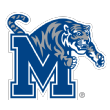
1. Penny Hardaway, Memphis Tigers — A four-time NBA All-Star with the Orlando Magic, Hardaway also played for the Phoenix Suns, New York Knicks and Miami Heat over a 14-year NBA career (1993-2006, 2007-08) that saw him emerge as one of the game’s most recognizable players. Hardaway reached the NBA playoffs eight times in his career — a 1995 NBA Finals loss to the Houston Rockets was the closest he got to a title — and averaged 20.4 points and 6.2 assists per game in the postseason.
Hardaway’s basketball achievements went beyond the NBA — he was a consensus All-American in college at Memphis in 1993 and won gold with USA Basketball at the 1996 Olympics in Atlanta. Nike’s “Lil’ Penny” ad campaign also helped launch Hardaway to superstardom off the court. Though injury problems that began with a serious knee injury in 1997-98 likely prevented Hardaway from reaching his full potential as a player, he is remembered as one of the important players of his generation.
